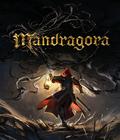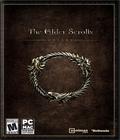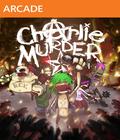This console generation has been good to beat-'em-up fans. Having classics like Dungeons & Dragons: Chronicles of Mystaria, The Simpsons and X-Men get re-released certainly helps, but the new crop of genre titles have really helped return the genre to prominence. Castle Crashers, Double Dragon Neon and Scott Pilgrim vs. The World have added new mechanics while keeping the old ones in place and successfully blended them together. That same amount of praise can be heaped upon Charlie Murder, the latest release from two-person Ska Studios.
The punk band consisting of backup singer Skelekitten, guitarist Lester Deth, bassist Tommy Homicide, drummer The Rexecutioner, and lead singer Charlie Murder are dead. Destined to fight demons in hell for all eternity, their souls are sent back to earth to see that it's overrun by demons. Leading the demons is the death metal band Gore Quaffer with Lord Mortimer, a former friend of Charlie's who's seeking revenge. It's up to the band to set things right by defeating Gore Quaffer at the upcoming Battle of the Bands.
Initially, the story seems like a simple one full of expected randomness and gore. You see innocent people getting taken out in various ways while references to things like the Castlevania series, the Mayan Apocalypse, My Little Pony and "Saw" add some levity to the proceedings. Then you get to the cut scenes, which detail how things got this way, and it takes a dark, serious turn. You see how Charlie's former friend Paul felt snubbed when Charlie got new bandmates and succeeded in another genre without him. The turn to evil is eventual as you see him struggle while Charlie tops the charts, runs the talk show circuit and gets into expected rock band behavior. While it's clear that Paul went completely evil and Charlie and company are the heroes, the game does a good job of blurring those lines a bit so you feel sorry for Paul and less sympathetic toward Charlie. Stories in this genre usually favor simplicity over depth, and it's great to see this title try something different in that regard.
The core gameplay is similar to some of the modern beat-'em-ups. After selecting your character, you start with a basic move set consisting of weak and strong attacks, along with grab and block moves. It'll get you by, but killing more enemies gets you more experience in the form of followers in your fictional social network feed. More experience means the ability to beef up your stats in areas like strength, speed, defense and mana (aptly named Anar-chi). More powerful moves are also gained when leveling up, including the ability to dual-wield weapons, perform devastating combos and wrestling moves, and initiate team-up moves with other players. The game plays out as a very long, continuous level, but you can always return to previously visited areas via a world map and visit shops for health and stat-boosting items.
Though it has basic RPG mechanics in place, the game delved into that aspect much more than other titles. Each band member fits into a standard RPG role, like mage, mesmer, tank, etc., and Anar-chi powers are unique to each one, whether it's unleashing a tornado of weapons against enemies or putting up healing totems for your fellow bandmates. The idea of roles is expanded further once you unlock the alternate takes on the band, which come with new classes instead of simply carrying over the same ones from the original band.
The loot drop mechanic, however, is the biggest takeaway from the RPG genre. Both stores and enemies have a high tendency to drop items that provide new moves or stat boosts. They can be as basic as strength or defense boosts when wearing specific items to gloves that emit acid damage and a hoodie that emits a shockwave when you fall. The boosts come in a variety of generic items, like hats and shirts and drinks, though some are offbeat, like honey badger claws and necktie headbands. The items benefit all band members, and users won't be stuck with an item that can only be used by a different band member.
This loot drop mechanic does a good job of keeping things addictive. The drops are frequent but random, and there are items that give you access to a few locked areas or a better ending. For kleptomaniacs and completionists alike, this brawler is different from the rest of the pack.
The other aspect that will keep players interested is the sheer variety in Charlie Murder. Enemy variety is quite impressive. You'll fight everything from zombies to larvae to spiders to SWAT teams and minotaurs, just to name a few. Though many enemies are specific to an area, the large number of foes is refreshing to see. The number of weapons is also extensive, since it includes both conventional and unconventional stuff, from shotguns, rocket launchers and swords to nail guns, stop signs and severed limbs.
Given the available weapons and abilities, enemies can die in several ways and have different death animations. A zombie, for example, can simply blink from existence when it runs out of energy, but it can also burn via electric shock or fire, melt from acid or get severed via spinning blades. When you couple that knowledge with the fact that there are numerous enemies and each has a set of animations for every circumstance, you realize that great care and attention to detail was lavished on the title.
Much of the gameplay involves brawling, but there are also a few side-scrolling shooting sessions that are reminiscent of games like Gradius. There are also a few rhythm sections similar to Parappa the Rapper that only use the face buttons. You'll also see chase sections with shopping carts and a small skateboarding section that's essentially a Quick Time Event. There's a scene reminiscent of the old arcade game Narc, where you mow down enemies on the highway, and you'll even get to brew your own beer from the hops and malts you collect in the game. It's a mish-mash of things that seem to be completely unrelated, but they spice up the gameplay a bit.
Like all good beat-'em-ups, Charlie Murder plays out well if you're playing alone, but the experience is amplified if you add more players. As you add more players, the number of enemies increases, as does the frequency of loot drops. As mentioned earlier, team-up moves are also available and take on the spirit of the game by being somewhat ridiculous. As an example, you can transform into a giant robot with laser eyes or transform into a wild beast so your partner can ride on you. Playing cooperatively works well both on- and offline, and there's even an opportunity to play against each other. Amazingly, no matter how many things are on-screen at the same time, you never get the sense that your character is lost, and after seeing what can happen at any moment, such a feat is commendable.
There are a few things that prevent the game from being excellent, including a bug that, while easily solvable from the user's end, means you have to sign out and sign back in while in the game so you can utilize online co-op and leaderboards. Boss fights are nothing more than glorified fights against enemies with a much larger health bar. More aggravating is that the checkpoints seem to be spaced further apart as you advance in the game. As you near the end, some checkpoints span at least two minigames and upward of three miniboss fights. The game is a little forgiving when it comes to repetition, so these boss fights don't respawn after every death and you can run away from most fights, but it is deflating to see how much ground you have to cover again.
As for the game's presentation, it's rather charming if you're into the style. The graphics will be familiar to those who have enjoyed previous Ska Studios games, particularly The Dishwasher series. It mixes a somewhat crude figure style with lots of dark watercolors and a few bright colors. Most of the time, the graphics are seen through filters, such as scratchy film or a full-on sepia look. The same goes for the animations, which go for a slow-quick style where the ends of movement frames are visible longer and the in-between animations move at a much quicker pace. It seems odd at first, but it's quite beautiful to see.
With the sound effects being so familiar and the voices nonexistent, the focus of the audio is the music, and it does a great job at fluctuating between riotous punk and moody orchestral pieces without feeling jarring. The original music does a great job of setting the mood for the situation, whether hard guitars are instigating your riots or illustrating Paul's slow descent into desperation. It is definitely one of the better action soundtracks out there, and it's a great reason to turn up the speakers even if you aren't necessarily a fan of the punk genre.
Charlie Murder is a very tough but fulfilling beat-'em-up. The too-similar boss fights will disappoint those who expect some strategy in their encounters, and the stingy checkpoint system in the latter half of the game may be off-putting to some players. Still, the fighting is fun whether you go solo or with allies, the minigames help break up any potential monotony, and the loot system will entice people into going for another round. Wrap that up in the top-notch stylized presentation, and it's easy to see why Charlie Murder is highly recommended.
Score: 8.5/10
More articles about Charlie Murder











 Fallen punk rock idol Charlie Murder must face off against rival band Gore Quaffer and its army of the damned in a four-player co-op RPG brawler inspired by dungeon crawlers and classic beat-'em-ups. Choose from five band members, gear up, level up, get inked up, and hit the streets for blood, loot and justice.
Fallen punk rock idol Charlie Murder must face off against rival band Gore Quaffer and its army of the damned in a four-player co-op RPG brawler inspired by dungeon crawlers and classic beat-'em-ups. Choose from five band members, gear up, level up, get inked up, and hit the streets for blood, loot and justice. 






